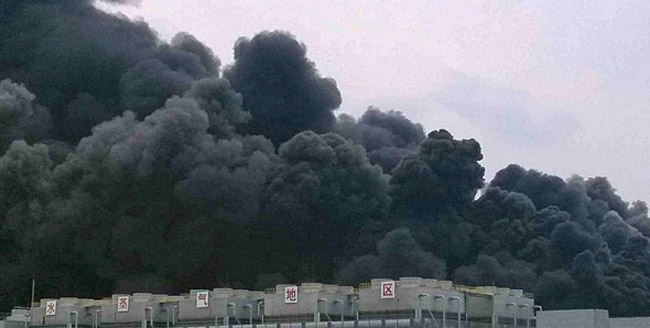On August 20, 1993, there was a catastrophic explosion at a Japanese chemical plant that ended up bleeding a small group of investors nearly dry.
The chemical facility produced a high-grade epoxy resin that was widely used in the manufacture of computer memory chips at the time.
In the days leading up to the disaster, plant operator Sumitomo Chemical Co. (OTC: SOMMY) produced about 40% of the global epoxy resin market. As a result, the explosion was followed by a worldwide shortage of random access memory (RAM) chips and had wide-spread effects on the digital memory industry…

The leading producer of RAM at the time of this disaster was Micron Technology Inc. (NASDAQ: MU).
About a month after the explosion, Sumitomo’s buffer reserves of epoxy resin began to diminish, and Micron shareholders began to feel the residual heat as manufacturing prices spiked. In just four months, Micron was down 26.5% — while the DJI, NASDAQ, and S&P 500 were all keeping a straight course.
Fast-forward 20 years to the present, and another chemical plant explosion is once again threatening major players in the digital memory industry…
And while what’s happening right now is eerily similar to the 1993 Sumitomo explosion, the sense of urgency is far greater.
Deja Vu
SK Hynix Inc. (KSE: 000660) is a semiconductor manufacturer that holds an estimated 30% market share in the current global dynamic access memory (DRAM) industry, a market that touches nearly every electronic device we own.
On Wednesday, September 4th, a massive chemical explosion erupted at two of SK Hynix’s production facilities in Wuxi, China, as a result of a so-called routine equipment installation.
At this point, the extent of the damage has not yet been fully realized. What is known for certain is that the facilities involved produce 40% of the company’s total DRAM.
When considering SK Hynix’s market share, this means that approximately 12% of the global DRAM supply has been affected.
Hynix has already stated that the fires will not impact production, but that is a highly questionable claim, considering the following image:

Hynix has contradicted itself by releasing a statement expressing that the company is still examining the effects of the explosion.
Of course, we know it can’t be both of those things: If they do not yet know the effects of the fire, they can’t possibly know how it will affect production…
Hynix is clearly in damage control right now and is trying to assure investors there is nothing to worry about. And while that may very well be the case in the long run, there is no doubt that this will at least have a short-term impact on DRAM pricing.
Until we receive clear affirmation on which parts of the plant were actually affected and exactly when production will resume, it is best practice to remain as cautious as possible.
The Memory Game
In the 1993 Sumitomo Chemical explosion, it took the memory industry about a month to feel the flames of a reduced epoxy supply.
However, the effects this time around could come much sooner — for two reasons…
First, the DRAM industry has already been experiencing a supply shortage. This shortage is expected through 2015, and leading DRAM manufacturers are already working near full capacity. The Wuxi plant explosion could be the figurative straw to break the camel’s back.
Secondly, the information on this story is going to move much more quickly this time around. Unless you happened to be reading the business section of a newspaper like the one pictured above, it’s unlikely you would have caught wind of this story right away.
Unlike the events of 1993, all eyes and ears are on this disaster.
At the time of its chemical plant explosion, Sumitomo Chemical was a private company. This means far fewer investors would have been on top of the story, let alone been able to make the connection between epoxy resin and DRAM production over at Micron…
And this time around, Micron is coming out on top, alongside DRAM industry-leader Samsung Electronics Co. (KSE: 005930).
Not only will these two companies see a near-term increase in DRAM prices as a result of the explosion; but they will also be able to continue their ongoing penetration of the DRAM market. Both Micron’s and Samsung’s DRAM market shares have grown about 100% since 2000, while SK Hynix has slowly been sloping downward.
To top things off, DRAM is gradually being replaced by NAND flash, a rising alternative for memory storage. While Micron and Samsung have successfully penetrated both DRAM and NAND markets, SK Hynix has had major difficulty transitioning. (The company’s DRAM market share more than doubles its NAND penetration.)
If you happen to own shares of SK Hynix, I highly suggest moving your investments to a safer and more promising space.
While there is an ever-growing need for memory storage in the emerging wake of “Big Data,” DRAM is not where you want to be placing your bets.
And while I am bullish on a few rising players in NAND flash, it will not be companies in memory, but rather in data mining and analysis that will experience the most growth in the years to come.
Turning progress to profits,
![]()
Jason Stutman

